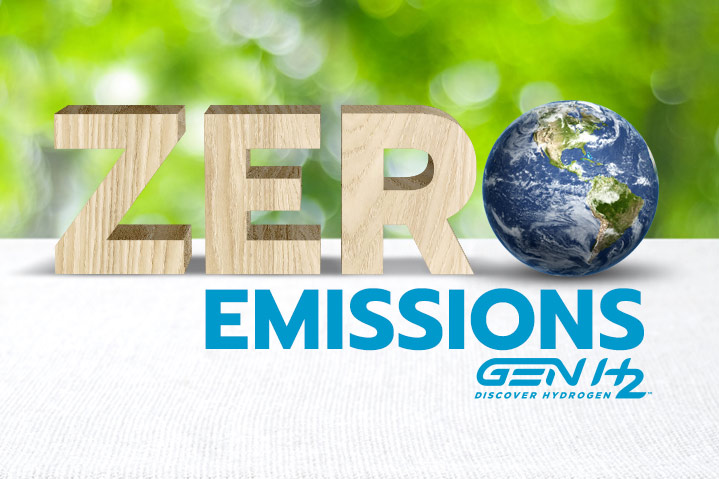Hydrogen From A to Z: Z for Zero Emissions
By: GenH2 Staff
Read Time: 3 minutes
Continuing on in our defining the Hydrogen economy from A to Z series, we are focusing on the letter Z and discussing Zero Emissions and the goal of “Net-Zero”.
In the known universe, only hydrogen offers the potential of zero emissions for a clean energy future. There exists a circle of water in which hydrogen is the agent or energy carrier. Starting with water, electricity is put into it (from solar power for example) and hydrogen and oxygen are made. Then, as needed, hydrogen and oxygen are put together and electricity (and water) is produced. In this unique and interlinked design, based entirely on water, hydrogen provides the one potential path to Net-Zero on Earth.
Terms like “carbon-neutrality”, “net-zero” or “climate positive” have been around for a while, however, with global commitments to address climate change, it is more important than ever to distinguish between what these terms mean. The term “zero emissions” refers to being carbon neutral, referring to CO2 emissions only and carbon neutrality specifically means the amount of carbon being removed from the atmosphere is equal to the carbon emitted. Net-zero emissions refer to the amount of all greenhouse gases (GHGs) such as carbon dioxide (CO2), methane, or sulfur dioxide that are removed from the atmosphere is equal to those emitted by human activity. Thus, net-zero denotes the balance between the amount of greenhouse gas produced and the amount removed from the atmosphere.
Net-zero is a global goal. Currently, references indicate that the Earth is already about 1.1°C warmer than it was in the late 1800s, and emissions continue to rise. To keep global warming from continuing to rise, emissions need to be reduced by 45% by 2030 with a net-zero goal in 2050. With the goal of net-zero in 2050, reports indicates that global warming can plateau worldwide.
According to reports, the global energy sector produces three-quarters of greenhouse gas emissions today. With goals of reducing these greenhouse gas emissions while transitioning to zero emissions energy options, solutions for averting increases in climate change can become a reality. Transitioning from coal, gas, and oil-fired power with energy from renewable sources, such as wind or solar and then to hydrogen, would dramatically reduce carbon emissions. Fortunately, a growing coalition of countries, cities, businesses, and other institutions are pledging to get to net-zero emissions. More than 70 countries, including China, the United States, and the European Union, have set a net-zero target, covering about 76% of global emissions. Additionally over 1,200 companies have put in place science-based targets in line with net zero, and more than 1000 cities, over 1000 educational institutions, and over 400 financial institutions have joined the Race to Zero, pledging to take rigorous, immediate action to halve global emissions by 2030.
Transitioning to a net-zero world is believed to be one of the greatest challenges for the future. It calls for significant commitments, game-changing solutions, and pathways for transformation of how we produce, consume, and move about in the future. GenH2 is one of those companies rising to challenge of providing and offering game-changing infrastructure solutions for liquid hydrogen as the standout option on the road to reaching zero-emissions. Liquid hydrogen is the means to store up vast amounts of renewable energy using liquefaction and controlled storage with zero-emissions.



